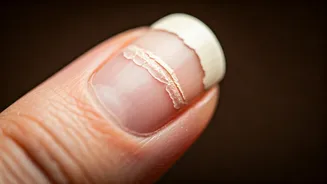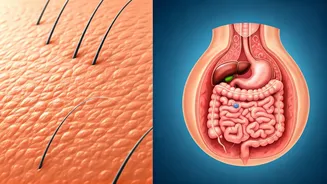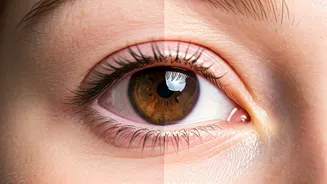Obesity's Skin Impact
Obesity significantly affects skin health, creating a range of problems that are often overlooked. The presence of excess fat can influence various skin conditions,
often making them more likely to occur or worsen. These issues highlight the importance of understanding the connection between body weight and skin well-being. Several specific skin conditions are closely associated with obesity, illustrating the wide-ranging effects on the skin.
Impaired Wound Healing
One of the most notable effects of obesity on the skin is impaired wound healing. This means that the skin takes longer to recover from injuries, cuts, and other wounds. The process is slowed by several factors related to obesity. For instance, increased inflammation and reduced blood flow to the skin can interfere with the body's natural healing mechanisms. This delayed healing not only increases the risk of infection but also potentially leads to more significant scarring and other complications. This is a critical concern as it impacts overall health.
Stretch Marks Unveiled
Stretch marks are another common skin issue closely linked to obesity. These marks, also known as striae, appear as the skin stretches rapidly due to weight gain. The fibers of the skin, particularly collagen and elastin, can break or tear, leading to visible lines on the skin's surface. These marks often occur on areas like the abdomen, thighs, and upper arms. While not harmful, stretch marks can be a cosmetic concern for many individuals and are a clear indicator of changes in skin structure resulting from obesity.
Dark Patches Explained
Dark patches on the skin, also known as hyperpigmentation, are another manifestation of obesity's impact. These patches, or areas of darker skin, can occur due to various reasons. One common cause is insulin resistance, which is often associated with obesity. Insulin resistance can lead to a condition called acanthosis nigricans, which causes dark, velvety patches in skin folds and creases, such as the armpits, neck, and groin. Hormonal imbalances and increased inflammation can also contribute to this condition. These changes affect the skin's appearance, often prompting medical attention.
Skin Tags Explained
Skin tags are small, soft growths that often appear in areas where skin folds, such as the neck, armpits, and groin. While generally harmless, skin tags are more common in people with obesity. The precise cause isn't fully understood, but factors like insulin resistance and friction between skin folds may play a role. The presence of skin tags is another visible sign of the body's response to excess weight, indicating an increased risk of other health issues related to obesity. This is a key example of how obesity manifests outwardly.
Fungal Infections Awareness
Fungal infections, such as those caused by yeast, are more prevalent in individuals with obesity. The warm, moist environment created by skin folds in obese individuals provides an ideal breeding ground for these infections. Fungal infections can manifest as rashes, itching, and other skin irritations, often in areas like the groin, under the breasts, and between skin folds. The increased risk highlights the importance of maintaining good hygiene and managing weight to prevent such infections, which often become recurrent.










